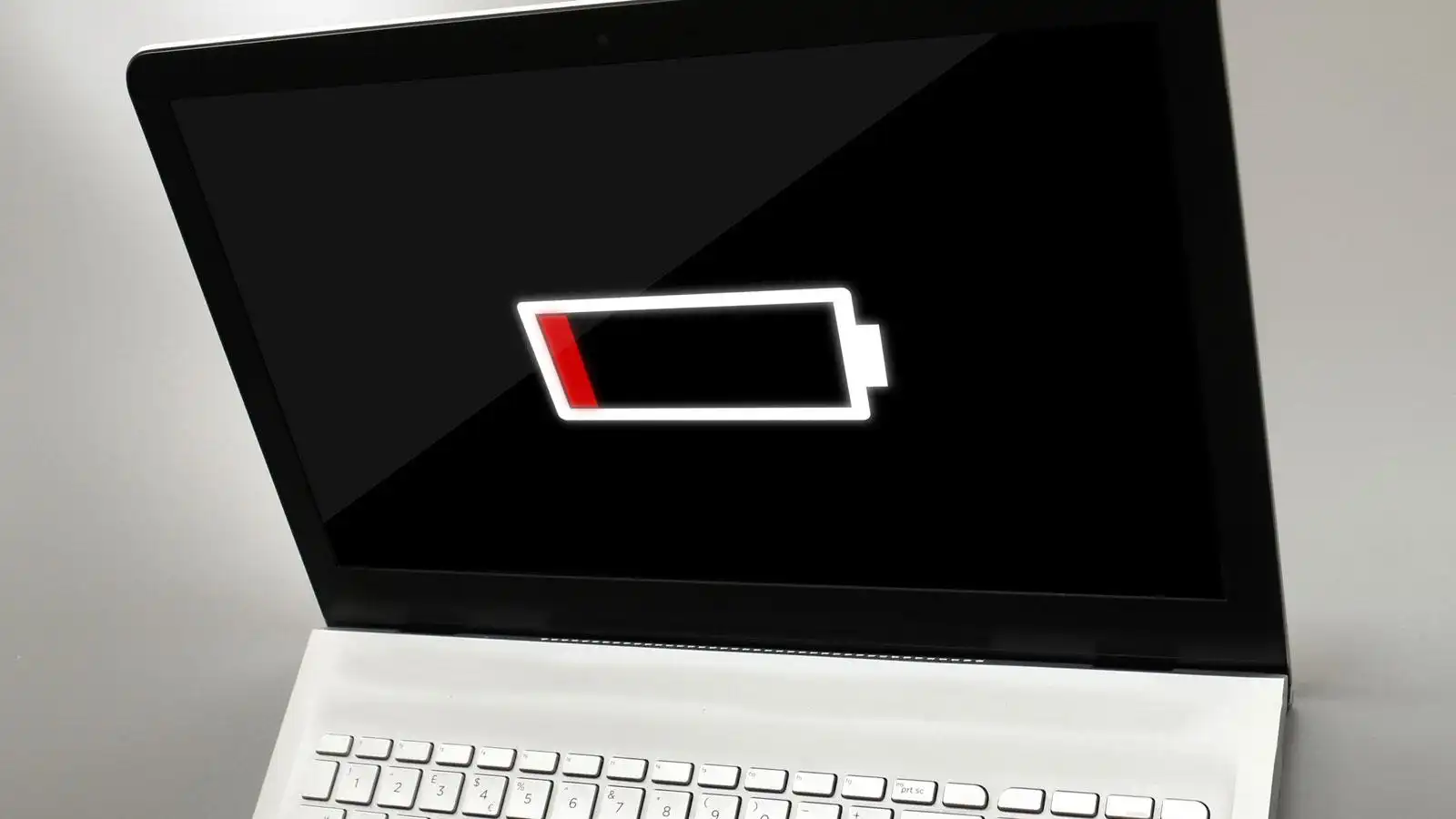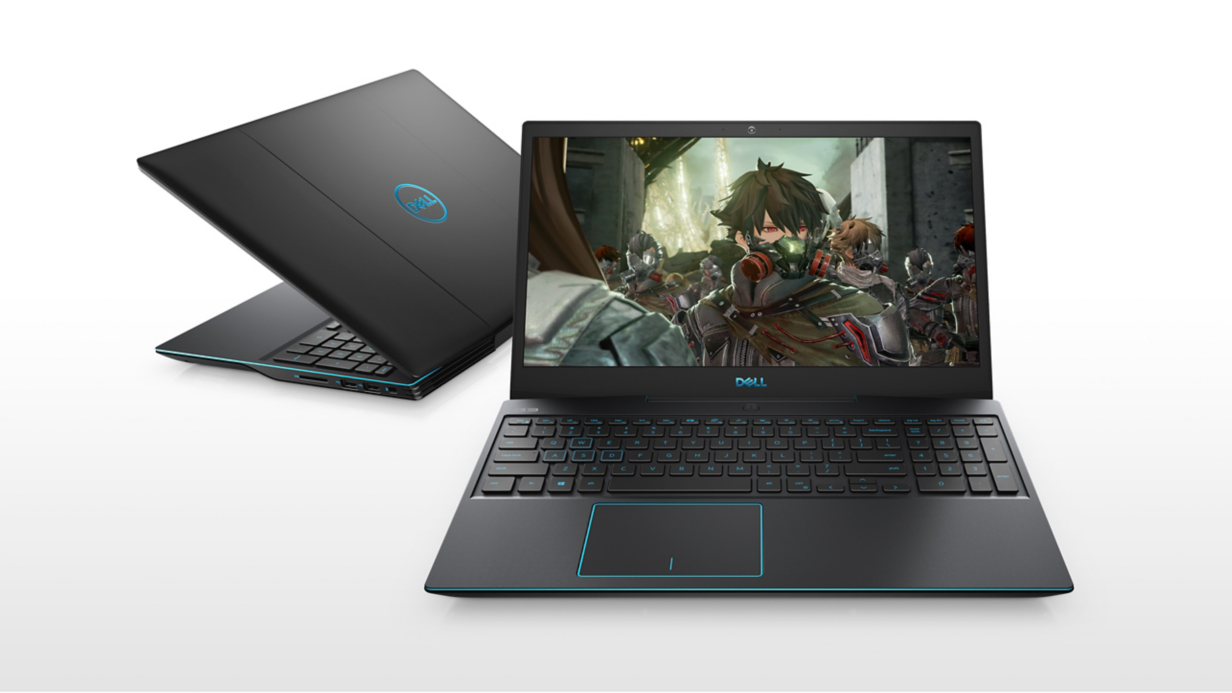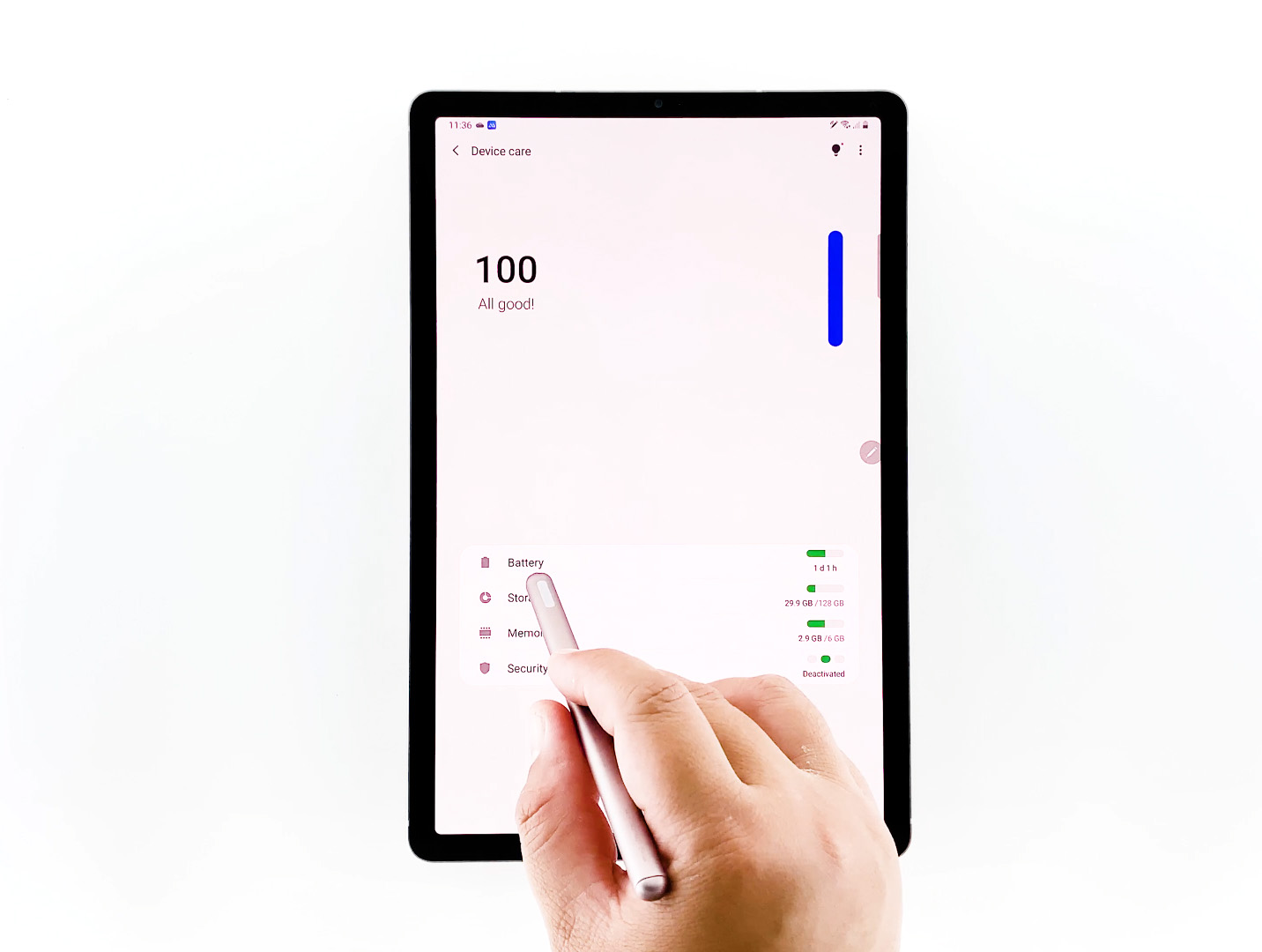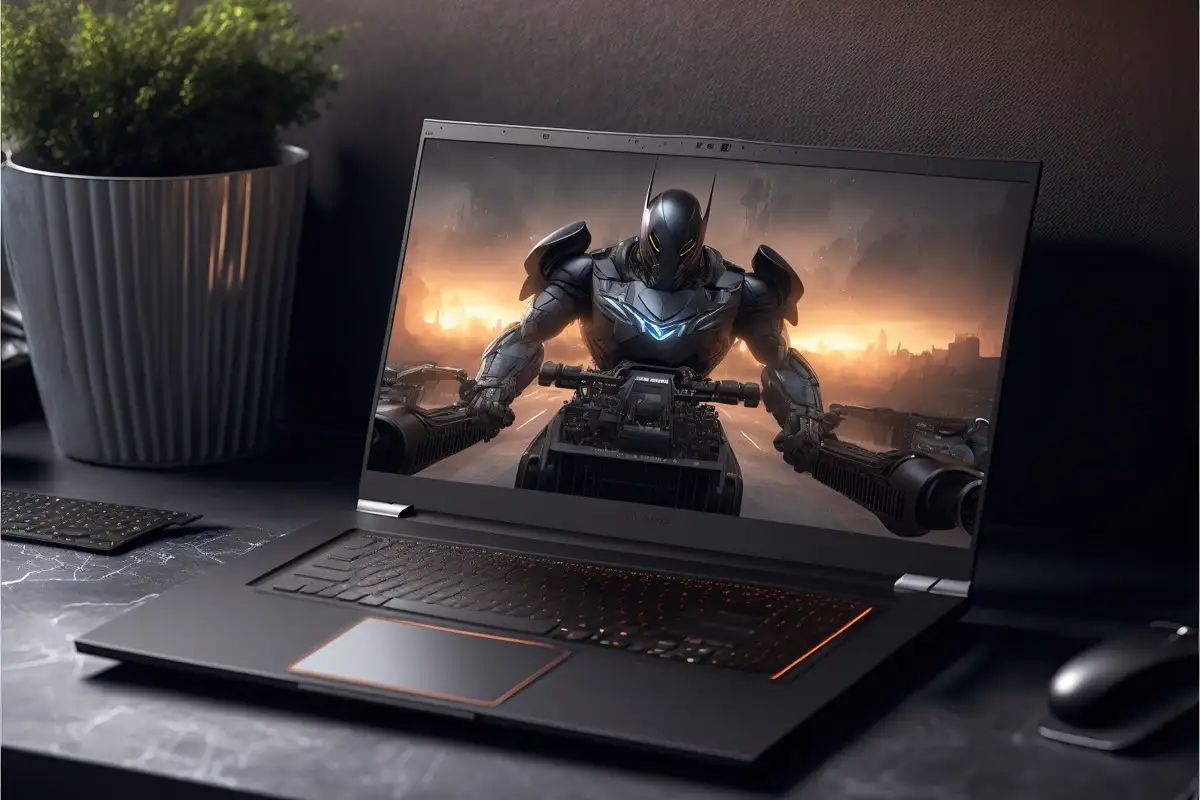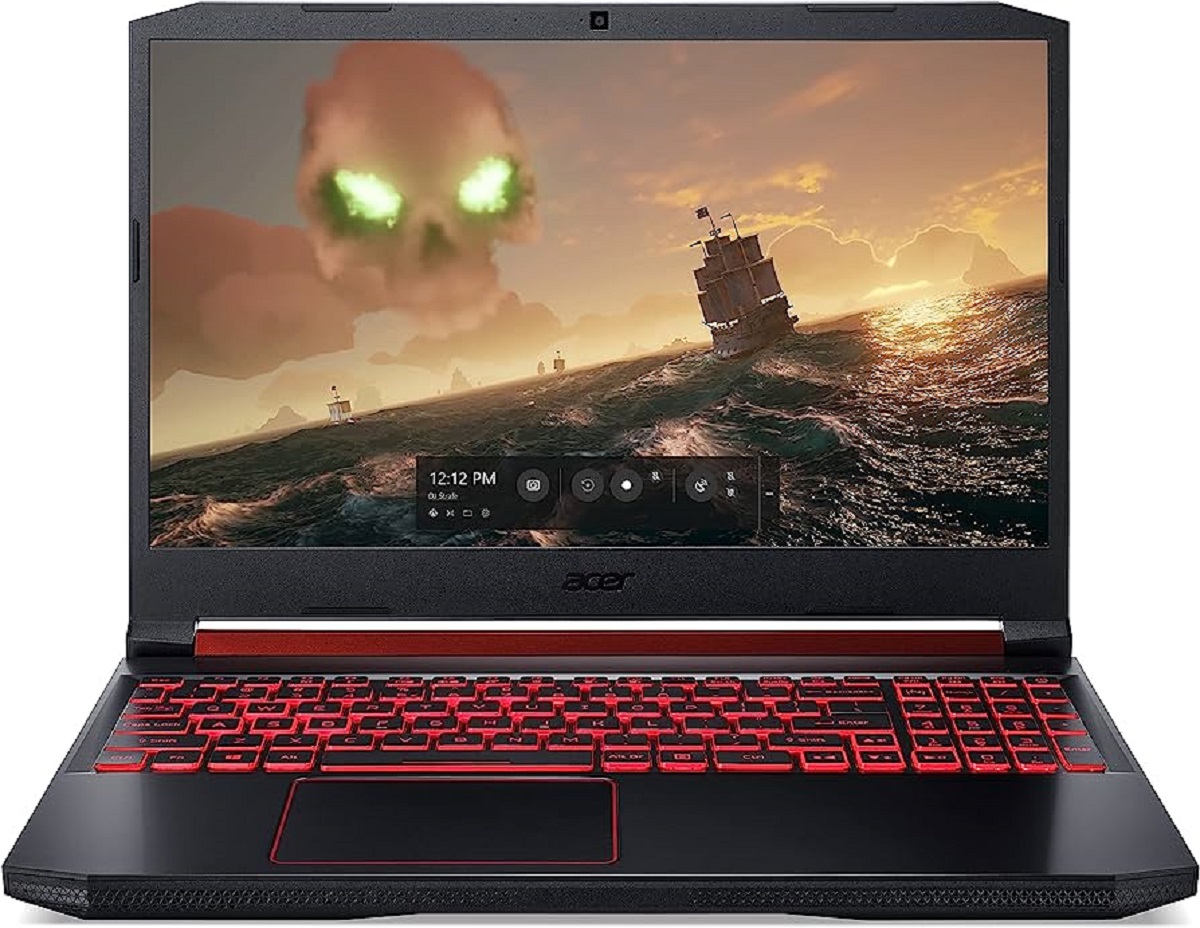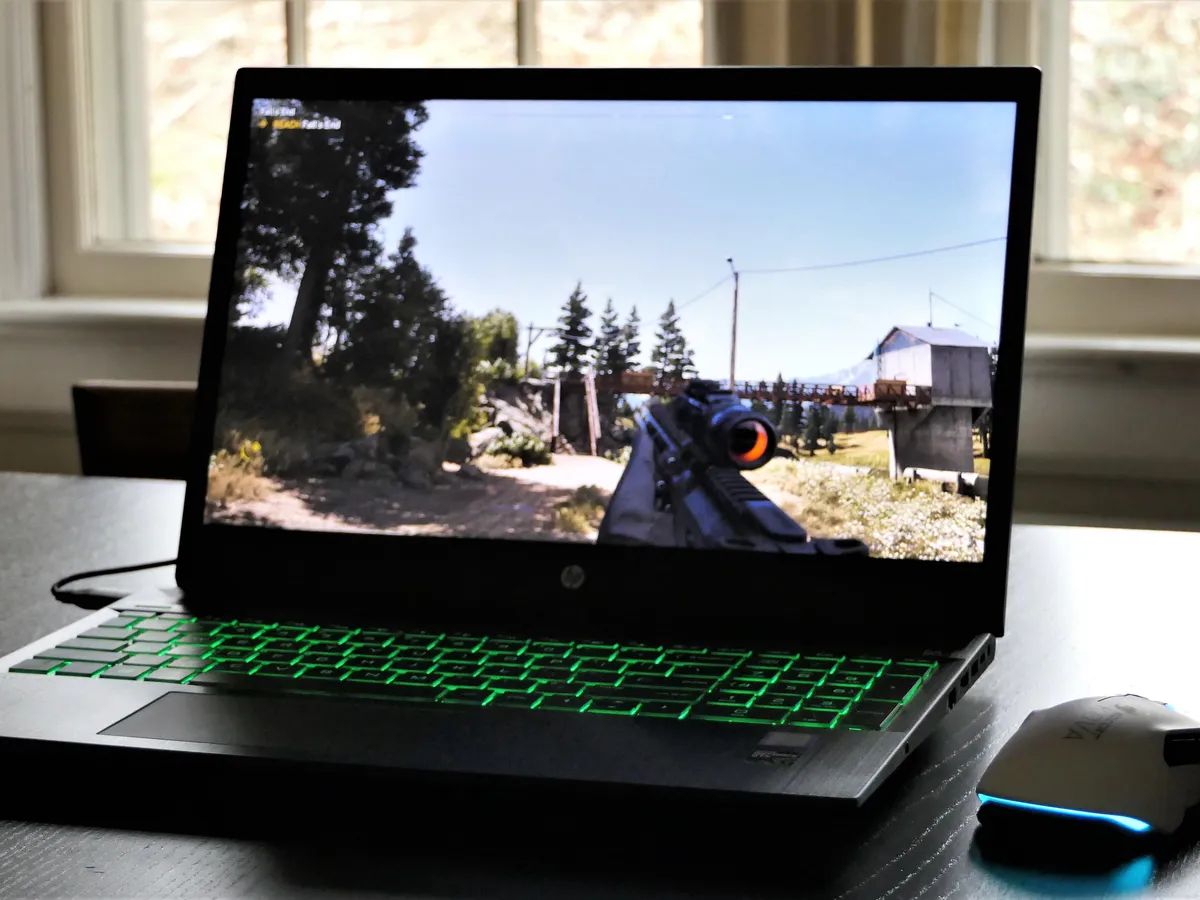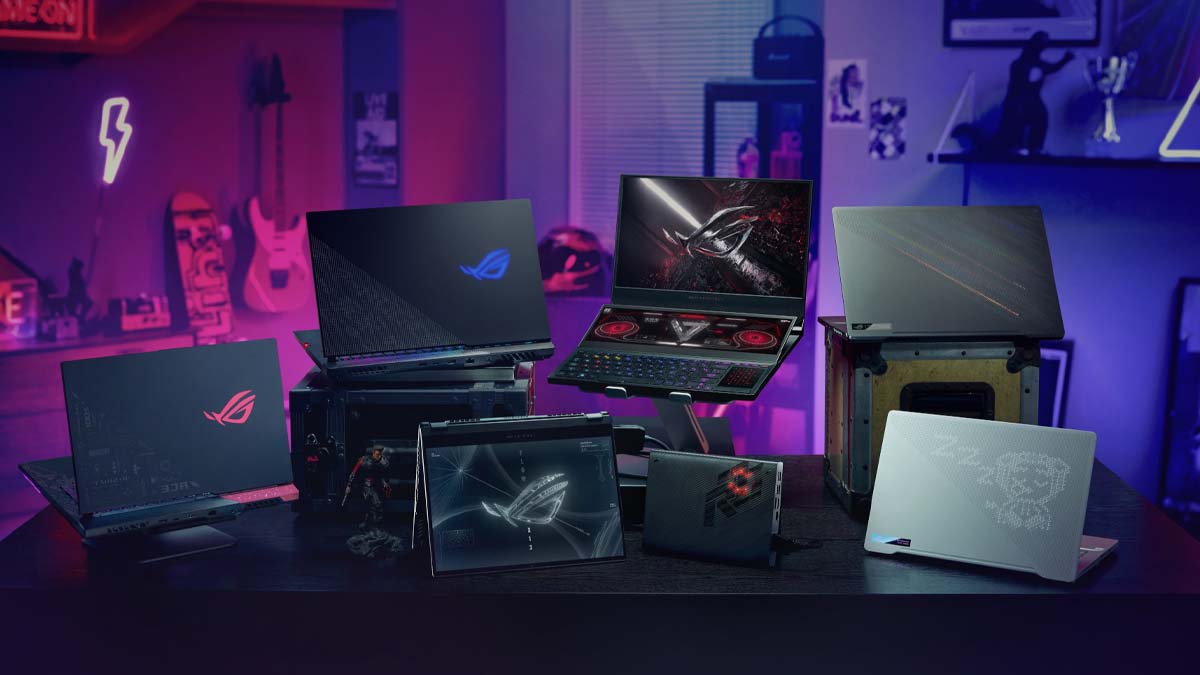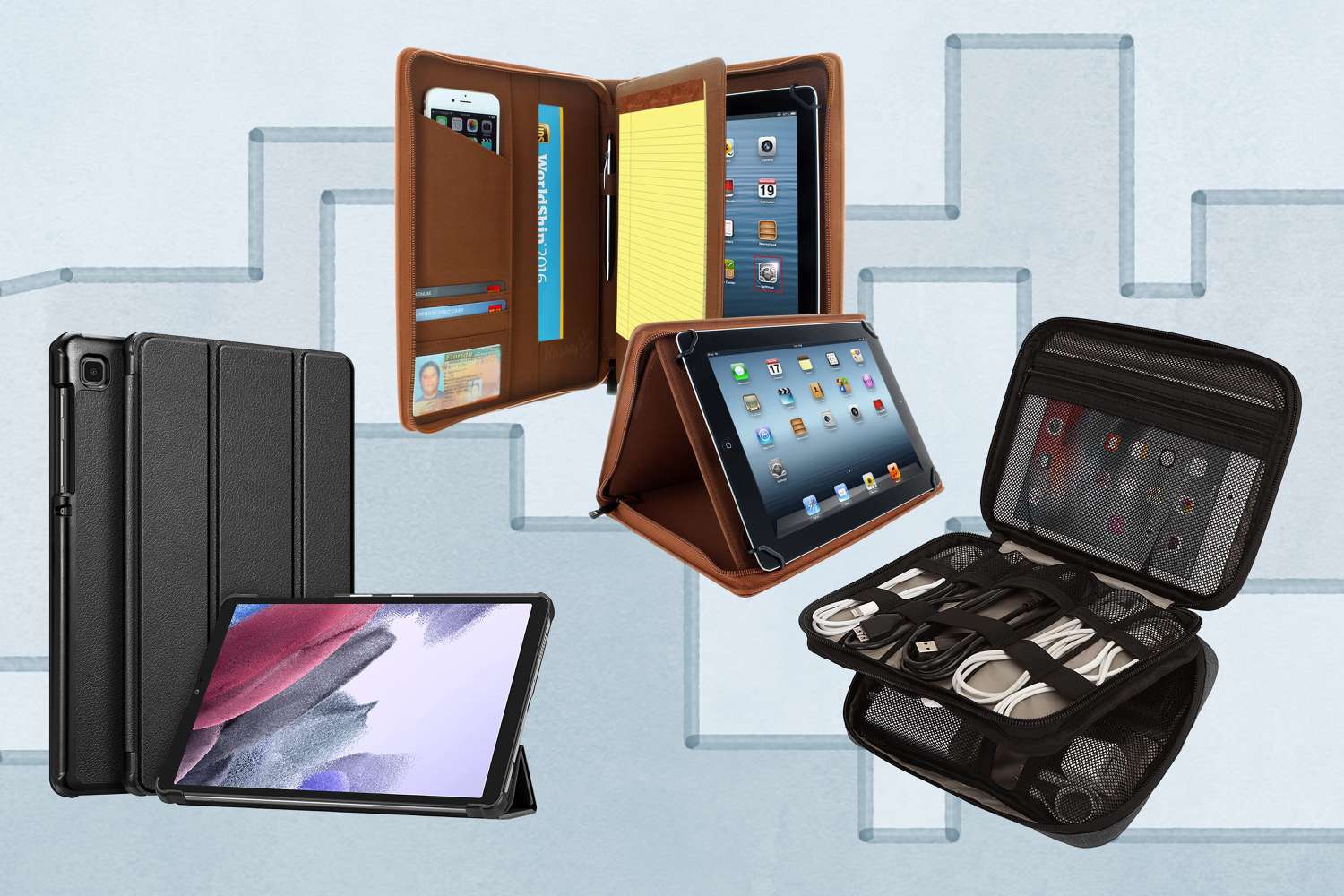Introduction
A gaming laptop is a powerful device designed for gaming enthusiasts who demand high-performance and immersive gaming experiences on the go. These devices are equipped with top-of-the-line hardware, advanced graphics cards, and high-resolution displays to deliver stunning visuals and smooth gameplay. However, one common concern among gaming laptop users is the fast draining of battery life.
Unlike regular laptops, gaming laptops consume a significant amount of power due to their specialized components and intense processing requirements. This constant power drain can leave users frustrated, especially when they are in the middle of an intense gaming session or working on the go. Understanding the reasons behind the quick battery drain will help us find ways to optimize the gaming laptop’s battery performance.
In this article, we will explore the reasons why gaming laptop batteries drain so fast and provide tips on how to extend their battery life. By implementing these tips, you can enjoy extended gaming sessions or complete your work without worrying about running out of battery power.
Background: What is a Gaming Laptop and its Power Consumption
A gaming laptop is a portable computer device specifically designed to provide high-performance gaming experiences on the go. These laptops are equipped with powerful processors, dedicated graphics cards, ample RAM, and high-resolution displays to handle the demands of modern video games. They often come with advanced features like RGB lighting, fast refresh rates, and customizable gaming controls.
Due to the powerful hardware and performance capabilities, gaming laptops consume more power compared to regular laptops or desktop computers. The various components like the processor, graphics card, and display require a significant amount of energy to function optimally. The power consumption of a gaming laptop is higher when running resource-intensive tasks like gaming, rendering, or streaming.
In addition to the high-performance hardware, gaming laptops also have additional power-hungry features like backlit keyboards, multiple cooling fans, and enhanced speaker systems. These features enhance the overall gaming experience but contribute to the higher power consumption.
When using a gaming laptop, it’s important to consider the power usage and battery life so that you can adjust your activities accordingly. Understanding how power is consumed can help you take measures to optimize the battery performance and ensure a longer-lasting gaming experience.
In the next sections, we will discuss the various reasons why gaming laptop batteries drain so fast and provide practical tips on how to extend their battery life.
Reasons Why Gaming Laptop Battery Drains So Fast
There are several factors contributing to the fast drain of battery life in gaming laptops. Let’s explore some of the most common reasons:
- High-performance hardware: Gaming laptops are equipped with powerful processors, dedicated graphics cards, and high-speed RAM to handle demanding gaming tasks. These components consume more power compared to regular laptops, resulting in faster battery drain.
- Graphics-intensive games: The latest video games often come with high-resolution graphics and complex visual effects. Running these graphics-intensive games puts a heavy burden on the GPU (Graphics Processing Unit), which requires substantial power, thus consuming more battery life.
- Unoptimized game settings: Sometimes, gamers choose to play games at maximum graphics settings without considering the impact on battery life. High settings like anti-aliasing, shadows, and particle effects demand more graphic processing power, leading to faster battery drain.
- Background processes and software: Several background processes and software, such as antivirus scans, system updates, or downloading software, consume CPU resources and drain battery life. It’s important to close unnecessary applications to optimize battery performance.
- Screen brightness and usage: The brightness level and usage time of the laptop screen directly affect battery life. Higher screen brightness settings consume more power, and extended use of the display, especially for gaming sessions, contributes to faster battery drain.
- Power-hungry peripherals and accessories: Gaming laptops often come with additional peripherals like gaming mice, RGB keyboards, and external speakers. These devices require power to function properly and may contribute to faster battery drain.
- Insufficient battery capacity: Some gaming laptops may have smaller battery capacities to accommodate the power-hungry hardware and maintain a sleek design. Limited battery capacity results in shorter battery life, especially when running resource-intensive tasks.
- Gaming laptops are not designed for extended battery life: Gaming laptops are primarily designed for performance and optimal gaming experiences rather than extended battery life. The focus is on delivering exceptional graphics, high frame rates, and seamless gameplay, which require substantial power consumption.
Understanding these factors will help you take the necessary steps to optimize your gaming laptop’s battery life. In the next section, we will provide valuable tips to extend your gaming laptop’s battery life.
High-performance hardware
One of the primary reasons why gaming laptop batteries drain so fast is the high-performance hardware they are equipped with. Gaming laptops are designed to provide exceptional gaming experiences by incorporating powerful processors, dedicated graphics cards, and ample RAM. However, these components consume a significant amount of power.
The processor, also known as the CPU (Central Processing Unit), is responsible for executing instructions and performing calculations. In gaming laptops, the CPU is designed to handle demanding tasks and complex calculations required for running modern video games. This increased processing power results in higher power consumption, leading to faster battery drain.
Another power-hungry component in gaming laptops is the dedicated graphics card or GPU (Graphics Processing Unit). Gaming laptops often feature high-performance GPUs capable of rendering detailed graphics and delivering smooth gameplay. The GPU’s primary function is to process and render the visuals in games, and this requires a substantial amount of power.
Additionally, gaming laptops are equipped with ample RAM (Random Access Memory) to handle the memory requirements of modern games. RAM allows the laptop to store and quickly access data needed for running various applications and games. However, higher RAM capacity can contribute to higher power consumption.
While these high-performance hardware components enhance the gaming experience, they also lead to faster battery drain. To optimize battery usage, it is essential to manage your gaming sessions and other tasks efficiently. Consider adjusting the settings and closing unnecessary background processes to minimize the power consumption of these power-hungry components.
Furthermore, keep in mind that gaming laptops are designed to deliver exceptional performance rather than focus on extended battery life. Balancing the usage of high-performance hardware and battery life is crucial for an optimal gaming experience on a laptop.
In the next section, we will discuss another reason behind the fast battery drain in gaming laptops – graphics-intensive games.
Graphics-intensive games
Gaming laptops are built to handle graphics-intensive games that demand high-resolution visuals and complex graphics effects. While these visually stunning games provide an immersive gaming experience, they also contribute to the fast drain of battery life.
When playing graphics-intensive games, the dedicated graphics card (GPU) is put to the test. The GPU is responsible for rendering and processing the intricate visuals, including detailed textures, shadows, lighting effects, and realistic animations. This demanding task requires a significant amount of power, resulting in faster battery consumption.
Modern games often come with advanced graphics features such as real-time ray tracing, high dynamic range (HDR), and advanced shading techniques. These features push the boundaries of visual realism but also require more computational power, adding to the power draw of the GPU.
The higher resolution of gaming laptops, such as Full HD or 4K displays, further intensifies the power consumption. Rendering games at higher resolutions demands more GPU power and ultimately puts additional strain on the battery.
While gaming, it is common for the GPU to be continuously utilized at high utilization rates, which means it will consistently draw power from the battery. This continuous load on the GPU, coupled with the other hardware components, contributes significantly to the fast battery drain in gaming laptops.
To manage battery usage while playing graphics-intensive games, consider adjusting the in-game graphics settings. Lowering the resolution, disabling certain graphics effects, or reducing the overall graphics quality can help reduce the power consumption of the GPU, thus extending battery life.
It is worth noting that running graphics-intensive games on a gaming laptop will inherently consume more power compared to less demanding titles. Understanding this trade-off can help you plan your gaming sessions accordingly and make informed decisions to optimize battery life.
In the next section, we will discuss the impact of unoptimized game settings on the battery life of gaming laptops.
Unoptimized Game Settings
When playing games on a gaming laptop, it’s common for users to maximize the graphics settings to enjoy the best visual experience. However, this can significantly impact the battery life as unoptimized game settings consume more power.
Most modern games allow players to adjust various graphics options such as texture quality, anti-aliasing, shadow quality, and particle effects. While these settings enhance the visuals, they also require additional processing power from the GPU and CPU, leading to higher power consumption.
Running games at higher resolutions, such as 4K or ultra-wide, puts a substantial load on the graphics card. Rendering games at these high resolutions demands more GPU power, resulting in faster battery drain. Lowering the resolution or using a more moderate resolution can help reduce power consumption and extend battery life.
Anti-aliasing is another graphics setting that impacts power consumption. Anti-aliasing smoothens jagged edges and improves image quality, but it requires additional GPU power. Consider using a lower anti-aliasing setting or disabling it entirely to reduce power usage.
Shadow quality is another factor that affects power consumption. Realistic shadows in games require computational resources to render. Lowering the shadow quality or disabling dynamic shadows can help conserve power and extend battery life.
Particle effects, such as explosions and smoke, can also be a significant drain on GPU resources and, in turn, battery life. Lowering the particle effects or disabling them can help reduce power consumption while still providing an enjoyable gaming experience.
It is important to find the right balance between graphics quality and power consumption to optimize battery life. Experiment with different graphics settings and find the sweet spot that provides a visually appealing experience while also being mindful of battery usage.
Additionally, some games have built-in optimization settings or performance modes that automatically adjust the graphics settings to prioritize performance over graphical fidelity. Enabling these options can help reduce power consumption and extend the battery life of your gaming laptop.
By optimizing the game settings and striking the right balance between visual quality and power consumption, you can enjoy prolonged gaming sessions without worrying about draining your laptop’s battery too quickly.
In the next section, we will explore the impact of background processes and software on the battery life of gaming laptops.
Background Processes and Software
Background processes and software running on your gaming laptop can contribute to faster battery drain. These processes utilize system resources, including the CPU and RAM, which directly impact power consumption.
Several background processes and software applications can run simultaneously while gaming. For example, antivirus scans, system updates, or software downloads can activate background processes that consume CPU resources and drain battery life. Therefore, it’s essential to close unnecessary applications and processes that are not required for your gaming session.
Sometimes, certain software applications may run in the background even if they are not actively used. These processes can eat up valuable system resources and impact battery life. It is a good practice to monitor and close unnecessary background applications to optimize battery performance.
Another aspect to consider is the power management settings of your gaming laptop. Ensure that your laptop is set to the appropriate power mode, such as “Balanced” or “Power Saver.” These power modes effectively regulate the laptop’s performance and power consumption, allowing you to strike a balance between performance and battery life.
Additionally, optimizing your gaming laptop’s power settings can help reduce power consumption. Adjusting the display brightness, setting shorter sleep or idle times, and enabling power-saving features can all contribute to extending battery life. Consider disabling unnecessary startup programs or services that consume system resources in the background.
Furthermore, keep your gaming laptop’s drivers and software up to date. Updated drivers often include performance optimizations and power management improvements, which can help reduce power consumption during gaming sessions.
By managing and optimizing background processes and software on your gaming laptop, you can minimize power consumption and prolong battery life. Being mindful of resource usage and understanding how background processes impact power consumption will enable you to optimize the gaming experience while preserving battery life.
In the next section, we will discuss the impact of screen brightness and usage on the battery life of gaming laptops.
Screen Brightness and Usage
The screen brightness and usage of a gaming laptop significantly impact its battery life. The display is one of the most power-consuming components, and higher screen brightness levels lead to faster battery drain.
Gaming laptops often feature high-resolution displays that deliver vibrant and detailed visuals. However, these displays consume a significant amount of power. Running games, especially with high brightness settings, further intensifies the power consumption.
Adjusting the screen brightness to a lower level can help conserve battery life. Lowering the brightness not only reduces power consumption but also extends the overall battery runtime. Depending on the lighting conditions, lowering the brightness to a comfortable level can still provide an enjoyable gameplay experience.
Screen-on time also affects battery life. Extended gaming sessions with continuous screen usage will drain the battery faster. Consider taking occasional breaks or minimizing screen usage when not actively playing games to save power.
In addition to adjusting screen brightness, it’s also essential to manage the screen timeout or sleep settings. Setting a shorter screen timeout will enable the display to turn off quickly when idle, preserving battery power. Customizing the power settings to automatically dim the screen or activate sleep mode after a certain period of inactivity can further optimize battery usage.
Some gaming laptops may have additional features like adaptive brightness or ambient light sensors. These features automatically adjust the screen brightness based on the surrounding lighting conditions. Enabling these settings can help optimize battery usage by adjusting the brightness level to the appropriate level at any given time.
Another aspect to consider is external displays or monitors. Connecting a larger external display to your gaming laptop will consume more power compared to the built-in display. It is crucial to adjust the external display settings and consider disconnecting it when not necessary to conserve battery life.
By managing the screen brightness, usage time, and adjusting the screen timeout settings, you can significantly extend the battery life of your gaming laptop. Being mindful of screen-related power consumption will enable you to strike a balance between visual quality and battery usage for an optimal gaming experience.
In the next section, we will explore the impact of power-hungry peripherals and accessories on gaming laptop battery life.
Power-Hungry Peripherals and Accessories
Gaming laptops often come with a range of peripherals and accessories that enhance the gaming experience. However, these power-hungry peripherals can contribute to faster battery drain.
When using power-hungry peripherals like gaming mice, RGB keyboards, or external speakers, it is important to consider their impact on battery life. These devices require power to operate and can add a significant load to the laptop’s battery.
Gaming mice, for example, often come with additional buttons, customizable profiles, and high-precision sensors. These features require power to function properly. While the power consumption of a gaming mouse may be minimal, it still contributes to the overall battery drain. Consider using wired peripherals or lower-power alternatives to save battery life.
RGB keyboards are another power-hungry accessory commonly found in gaming laptops. The colorful lighting effects and customizable backlighting can be visually appealing but can drain the battery quickly. Consider using static or lower-intensity lighting effects to conserve power.
External speakers or headphones are frequently used to enhance gaming audio. While these accessories significantly contribute to the immersive gaming experience, they also require power to produce high-quality sound. Consider using headphones or lowering the volume on external speakers to reduce power consumption.
It is important to note that each gaming laptop and peripheral combination will have a different impact on battery life. Experimenting with different setups and monitoring power usage can help you find the best balance between peripherals and battery life.
It’s also worth mentioning that external devices connected to the laptop, such as USB hubs or external hard drives, can draw power from the laptop’s USB ports. Disconnecting unnecessary devices can help reduce power consumption and prolong battery life.
By being mindful of the power consumption of peripherals and accessories, you can optimize battery life on your gaming laptop and enjoy a more extended gaming experience without constantly worrying about battery drain.
In the next section, we will discuss the impact of insufficient battery capacity on gaming laptop battery life.
Insufficient Battery Capacity
One of the reasons why gaming laptop battery life may drain quickly is due to insufficient battery capacity. Gaming laptops are designed to deliver exceptional performance, and often manufacturers prioritize powerful hardware over battery longevity.
Due to the power-hungry components and high-performance hardware, gaming laptops require larger amounts of power to operate. However, in order to maintain a sleek and portable design, manufacturers often have to compromise on battery capacity.
Gaming laptops typically have smaller battery capacities compared to regular laptops. This limitation can result in shorter battery life, especially when running resource-intensive tasks like gaming or running multiple applications simultaneously.
The combination of power-hungry components, intense processing, and high-performance gaming sessions can lead to faster battery drain, making it necessary to have access to a power source for extended gaming periods.
If you find that your gaming laptop’s battery capacity is insufficient for your needs, there are a few things you can do to manage the situation. First, make sure to fully charge your laptop before unplugging it to maximize the available power.
Additionally, consider adjusting your power settings and optimizing your usage. Lowering the screen brightness, reducing CPU and GPU usage, and closing unnecessary background processes can help extend battery life.
Using power-saving features provided by the operating system and the laptop’s manufacturer can also help optimize battery performance. These features may include power profiles that limit CPU and GPU power consumption, adjust screen brightness, and manage other power-consuming components.
Finally, planning your gaming sessions and being mindful of when and where you have access to a power outlet can significantly enhance your gaming experience. This may involve gaming near an available power source or investing in a portable battery pack that can provide additional power on the go.
Remember that while insufficient battery capacity may be a limitation, understanding and managing your gaming laptop’s power consumption can help maximize the available battery life and ensure you get the most out of your gaming sessions.
In the next section, we will discuss how the design of gaming laptops affects their battery life.
Gaming Laptops Are Not Designed for Extended Battery Life
It’s important to recognize that gaming laptops are primarily designed for delivering exceptional gaming performance rather than prioritizing extended battery life. The focus of these devices is on providing power-hungry hardware and high-performance components to handle demanding gaming tasks.
Due to their specialized design, gaming laptops often prioritize exceptional graphics, high frame rates, and smooth gameplay, which require a significant amount of power. This emphasis on performance comes at the expense of battery longevity.
Manufacturers aim to strike a balance between power consumption and battery capacity to maintain a sleek and portable design. As a result, gaming laptops typically have smaller battery capacities compared to regular laptops or ultrabooks.
The combination of powerful processors, dedicated graphics cards, and high-resolution displays draws a substantial amount of power, leading to faster battery drain during gaming sessions or resource-intensive tasks.
It’s important for users to understand that gaming laptops are designed to provide an optimal gaming experience while being connected to a power source. The expectation is that gamers will have access to a power outlet for prolonged gaming sessions.
While gaming laptops may not excel in terms of extended battery life, there are still steps that can be taken to optimize battery performance and make the most out of the available battery capacity. This includes adjusting power settings, managing resource-intensive processes, and minimizing unnecessary power consumption.
It’s also worth noting that advancements in technology are gradually improving the battery life of gaming laptops. Manufacturers are making strides in developing more power-efficient components and optimizing power management systems to allow for a longer-lasting battery.
However, it’s important to set realistic expectations for battery life when using a gaming laptop. Being aware of the limitations and planning your gaming sessions accordingly will help you maximize your gaming experience without constantly worrying about battery drain.
In the next section, we will provide some valuable tips on how to extend the battery life of your gaming laptop.
Tips to Extend Gaming Laptop Battery Life
While gaming laptops are not known for their extended battery life, there are several practical tips you can implement to optimize the battery performance and make the most out of your gaming sessions. Here are some valuable tips:
- Optimize power settings: Adjust your power settings to balance performance and power consumption. Use power-saving or balanced power modes to limit CPU and GPU power consumption and adjust screen brightness to an optimal level.
- Minimize background processes: Close unnecessary applications and background processes that consume system resources and drain battery life. This includes software updates, antivirus scans, and other non-essential tasks.
- Manage game settings: Optimize your game settings by lowering graphics options like resolution, anti-aliasing, and shadow quality. Adjusting these settings can reduce the load on the GPU and conserve battery life while still providing an enjoyable gaming experience.
- Control screen brightness: Lower the screen brightness to a comfortable level. The screen is one of the most power-hungry components, so using a lower brightness setting can significantly extend the battery life of your gaming laptop.
- Limit peripheral usage: Power-hungry peripherals like gaming mice, RGB keyboards, and external speakers can contribute to faster battery drain. Consider using lower-power peripherals or disabling unnecessary features to conserve battery life.
- Manage wireless connections: Turn off Wi-Fi and Bluetooth when not in use. These wireless connections consume power even when idle, so disabling them can help extend battery life.
- Keep your laptop cool: Overheating can cause the laptop’s components to work harder, increasing power consumption. Ensure proper airflow and consider using a cooling pad or adjusting the fan settings to keep your gaming laptop cool.
- Plan your gaming sessions: If you know you will be gaming for an extended period without access to a power source, consider adjusting your gaming time or bringing a portable battery pack to keep your laptop charged.
By implementing these tips, you can optimize the battery performance of your gaming laptop and enjoy longer gaming sessions without constantly worrying about battery drain. It’s important to find the right balance between performance and battery life to ensure an optimal gaming experience.
Remember that battery life may vary depending on factors such as the specific gaming laptop model, game settings, and usage patterns. Experimentation and monitoring battery usage will help you understand the unique characteristics of your gaming laptop and how to maximize its battery life.
While gaming laptops may not provide the same battery longevity as regular laptops, advancements in technology are gradually improving battery life for gaming laptops. Keeping an eye on emerging trends and new developments can provide insights into future improvements in battery performance.
With these tips in mind, you can make the most out of your gaming laptop’s battery life and enjoy uninterrupted gaming experiences wherever you go.
Conclusion
Gaming laptops are powerful devices designed to provide exceptional gaming experiences on the go. However, their high-performance hardware and graphics-intensive games contribute to faster battery drain compared to regular laptops. Understanding the reasons behind the quick battery drain and implementing strategies to optimize battery performance are crucial for gamers who want to extend their gaming sessions without constantly worrying about battery life.
We have explored the various reasons why gaming laptop batteries drain so fast, including high-performance hardware, graphics-intensive games, unoptimized game settings, background processes and software, screen brightness and usage, power-hungry peripherals and accessories, insufficient battery capacity, and the fact that gaming laptops are not primarily designed for extended battery life.
To extend gaming laptop battery life, it is important to optimize power settings, manage background processes, adjust game settings, control screen brightness, limit peripheral usage, manage wireless connections, keep the laptop cool, and plan gaming sessions accordingly. Implementing these tips will help maximize battery performance and enjoy longer gaming sessions.
Though gaming laptops are not designed to prioritize battery life, advancements in technology continue to improve battery performance. As power-efficient components are developed and power management systems are optimized, we can expect longer-lasting batteries in future gaming laptop models.
Ultimately, balancing the performance demands of gaming and battery life is key. It is crucial for gamers to understand the limitations of their gaming laptops and plan accordingly, whether by having access to a power source for prolonged gaming sessions or taking advantage of power-saving features and optimizations.
By implementing these strategies and staying mindful of power consumption, gamers can optimize their gaming laptop’s battery usage and enjoy immersive gaming experiences without the constant worry of running out of battery power. With the right approach, gaming laptops can continue to provide thrilling gaming sessions while maintaining a reasonable level of battery life.







